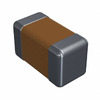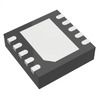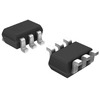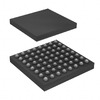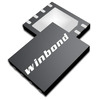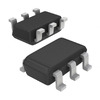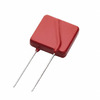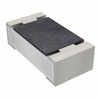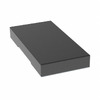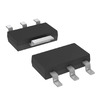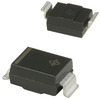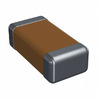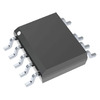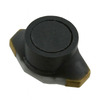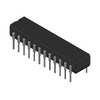Decoding Baud Rate and Bit Rate: An In-depth Look at Definitions and Their Uses
In the dynamic field of telecommunications, baud rate, and bit rate are useful metrics that define network performance and data transmission quality. The baud rate, established by Émile Baudot in the 1870s, measures the number of signal units or symbols transmitted per second, influential in assessing transmission speed and quality. Conversely, bit rate quantifies the number of bits transmitted per second, influencing network throughput and efficiency. These metrics have evolved from their origins in telegraphic communications to underpin modern digital broadband and optical networks. This article examines the intricacies of baud rate and bit rate, their definitions, relationships, and enhancements over time. It also highlights their significant roles in optimizing data flow, improving media quality, and addressing bandwidth and network design challenges in today's interconnected landscape. Through exploring these fundamental concepts, it gains insights into their key contributions to advancing telecommunications technology.
Catalog
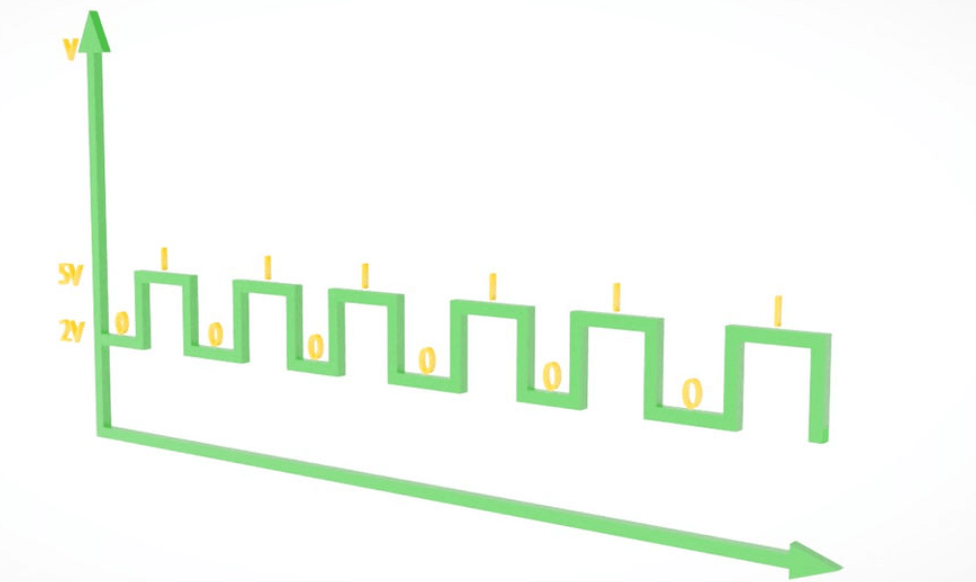
Figure 1: Baud Rate
Exploring Baud Rate
Baud rate, often shortened to "Bd," is named after Émile Baudot, a pioneer in telegraphic communication who created the Baudot code in the 1870s. Unlike Morse code, which uses dots and dashes, the Baudot code employs a 5-bit system where each bit combination represents a different character. This innovation made telegraphic communication more efficient, allowing faster data transmission over telegraph lines.
In today's telecommunications, the baud rate refers to the number of signal units, or symbols, transmitted per second. Each symbol can represent multiple bits, depending on the modulation technique. For instance, with binary modulation, each symbol equals one bit (0 or 1). However, more advanced techniques like quadrature amplitude modulation (QAM) can encode multiple bits per symbol. Therefore, the baud rate measures the symbol transmission rate, not the bit rate. This distinction is dynamic for considering data transmission in various systems such as internet modems, digital TV broadcasting, and wireless networks, where fast and efficient data transfer is a must.
The Differences of Baud Rate vs. Bit Rate
Analyzing the difference between baud rate and bit rate is settling in digital communications. The baud rate counts the number of symbols sent per second. Bit rate measures how many bits are transmitted in that time.
In simple digital systems like basic serial connections, one symbol usually equals one bit. However, with advanced encoding techniques, multiple bits can be packed into a single symbol. For example, 16-QAM (Quadrature Amplitude Modulation) uses sixteen different signal phases and amplitudes to represent 4 bits per symbol.
Encoding more bits per symbol boosts the bit rate without raising the baud rate. This means more data is transmitted efficiently without needing more bandwidth. This is mainly in scenarios where increasing the baud rate isn't practical due to bandwidth limits or regulatory restrictions. Considering how to balance the baud rate and bit rate helps optimize data transmission, improving efficiency while managing signal quality and noise.
Discovering the Connection Between Baud Rate and Bit Rate
Baud rate measures the number of signal changes, or symbols, transmitted per second in a communication channel. It indicates how often the channel state changes, not the amount of data transmitted. In simple systems where each signal change represents one bit, the baud rate matches the bit rate.
Modern encoding techniques use multi-level or multi-bit encoding to increase the number of bits per symbol, improving data throughput. These techniques involve complex signal modulation schemes that change the signal's phase, amplitude, or frequency to encode multiple bits in one symbol. For example, 8-PSK (Phase Shift Keying) uses eight distinct phases to encode three bits per symbol. This increases the bit rate without a corresponding increase in the baud rate. Using these advanced encoding techniques optimizes bandwidth and improves transmission efficiency, especially in bandwidth-limited or costly environments.

Figure 2: Telephone Baud Rate Modem
Utilizing Baud Rate in Telephone Modem Technology
In the early days of the internet, the relationship between baud rate and bit rate in modems was often misunderstood. Early modems, such as the Bell 103 and 202, had a direct one-to-one relationship between baud rate and bit rate, meaning 1200 baud equaled 1200 bits per second.
As modem technology advanced, multi-bit encoding methods were introduced. These techniques allowed multiple bits to be transmitted per symbol. For this case, a modem using 16-QAM (Quadrature Amplitude Modulation) could transmit four bits per symbol. This innovation effectively quadrupled the bit rate without increasing the baud rate.
These advancements were used to efficiently practice the limited bandwidth of telephone lines. By packing more data into each symbol, modems could achieve higher data rates while staying within the same baud rate, optimizing the available frequency spectrum. This improvement significantly enhanced internet access and data transfer over analog phone systems, leading to faster and more reliable communications.
Benefits of Using Multiple Bits Per Baud in Data Transmission
Using multiple bits per baud enhances data throughput within a fixed bandwidth. The Shannon-Hartley theorem explains that the maximum data rate for a communication channel depends on its bandwidth and the number of signal levels or symbols used.
Multilevel modulation schemes, like 64-QAM (Quadrature Amplitude Modulation), allow each symbol to represent several bits instead of just one. For example, 64-QAM encodes six bits per symbol, increasing the bit rate without needing more bandwidth. This approach is effective in bandwidth-constrained environments where expanding the frequency range isn't possible.
Strategies for Managing and Controlling Bit Rate
Effective bit rate management is used for optimizing digital media delivery and making efficient use of network resources. Two primary methods, Constant Bit Rate (CBR) and Variable Bit Rate (VBR), are commonly used to control data encoding and transmission.
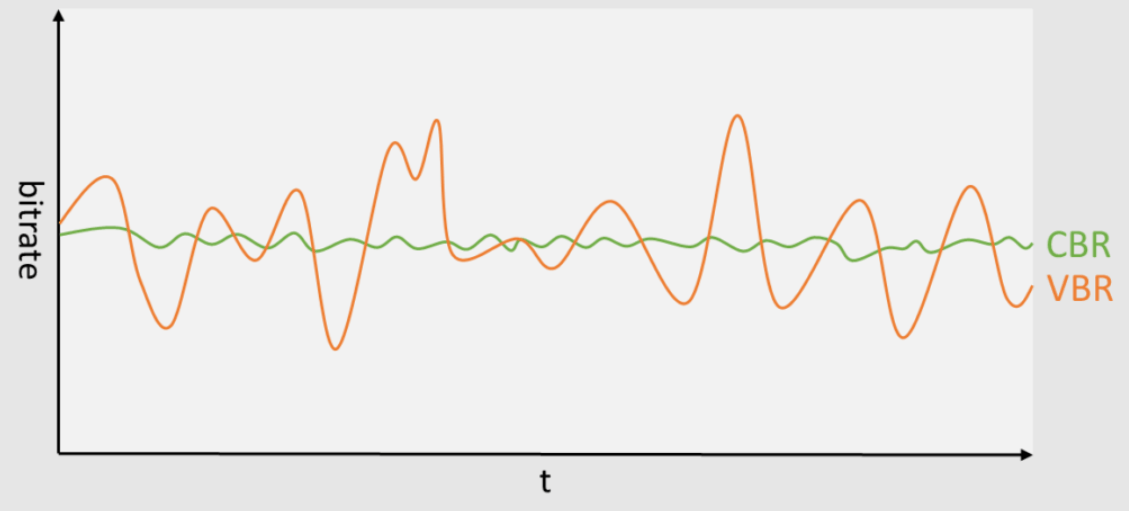
Figure 3: Constant Bit Rate (CBR) and Variable Bit Rate (VBR)
Constant Bit Rate (CBR): CBR maintains a uniform bit rate throughout the transmission. This method is ideal for environments requiring stable bandwidth, such as live-streaming sports or events where sudden quality drops are noticeable and detrimental.
Variable Bit Rate (VBR): VBR adjusts the bit rate according to the complexity of the content. This method results in better overall quality, especially for movies or music where different segments vary in complexity. VBR allocates more bits to complex scenes and fewer to simpler ones.
Rate Control Algorithms: Rate control algorithms fine-tune these processes by dynamically modifying bit rates in real-time based on network conditions and media content complexity. These adaptive techniques ensure optimal quality while conserving bandwidth and managing network congestion.
Applications of Bit Rate and Baud Rate in Modern Communication Technologies
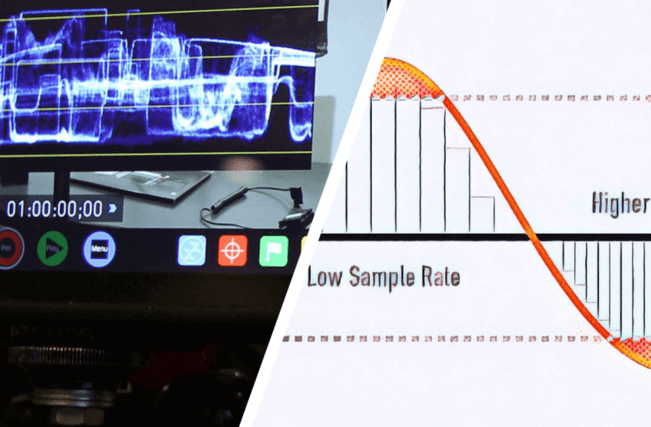
Figure 4: Bit Rate in Digital Media
Bit rate is useful in digital media, directly affecting the quality and size of audio and video files. Higher bit rates produce clearer, richer media. For instance, MP3 audio files range from 128 kbps, suitable for standard listening, to 320 kbps for high-fidelity sound. Video streams also vary in bit rates depending on resolution and compression settings.

Figure 5: Bit Rate in Video Streaming
Choosing the right bit rate in video streaming balances image quality and bandwidth use. High-resolution videos like 1080p or 4K require higher bit rates to maintain detail and color accuracy, avoiding compression artifacts. Lower bit rates allow smoother streaming on limited bandwidth or mobile data, though at a loss of visual quality. Media professionals must select bit rates that fit the desired quality and network conditions, ensuring seamless viewing. This choice is influential for content creators, broadcasters, and streaming services aiming to provide high-quality media on any platform or connection.

Figure 6: Digital Media Compression
Higher bit rates improve quality but increase file size, ideal for high-definition video where detail retention is insistent. Lower bit rates reduce file size and quality, better for mobile streaming where data and storage are limited. Network engineers must consider bit rates to avoid congestion and ensure the network supports needed data flow, unsafe in high-demand environments like corporate networks or service providers. Bit rate also affects error correction and data integrity algorithms, required for maintaining data accuracy over unreliable connections.

Figure 7: Baud Rate in Wireless Communications
In modern wireless communications, such as WiFi, baud rate is analytic for system design and performance. Advanced modulation techniques like 256-QAM in WiFi can encode 8 bits per symbol, increasing the bit rate while maintaining the baud rate. Efficient spectrum use is dynamic in densely populated areas or high-traffic scenarios to ensure robust, high-speed connectivity.
Measuring Bit Rate and Baud Rate in Optical Networks
Accurately measuring bit rate and baud rate in optical networks is used for assessing network performance and ensuring reliable data transmission. This process involves using sophisticated instruments such as Bit Error Rate Testers (BERT) and Optical Spectrum Analyzers (OSA).
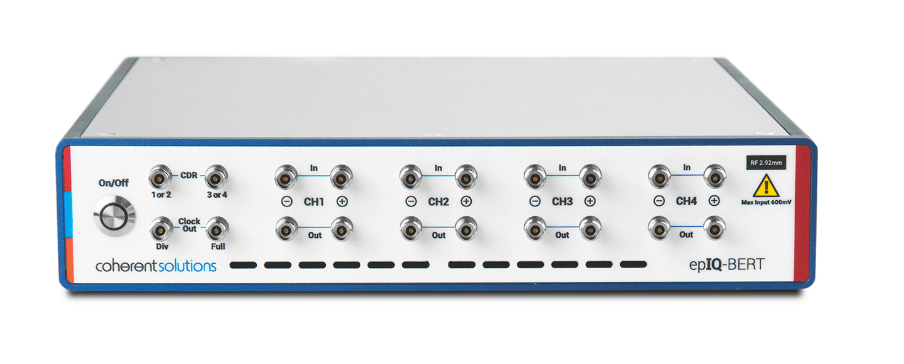
Figure 8: Bit Error Rate Testers (BERT)
A BERT evaluates data integrity by measuring the error rate in received bits compared to sent bits. This helps determine network reliability and guides performance enhancements.
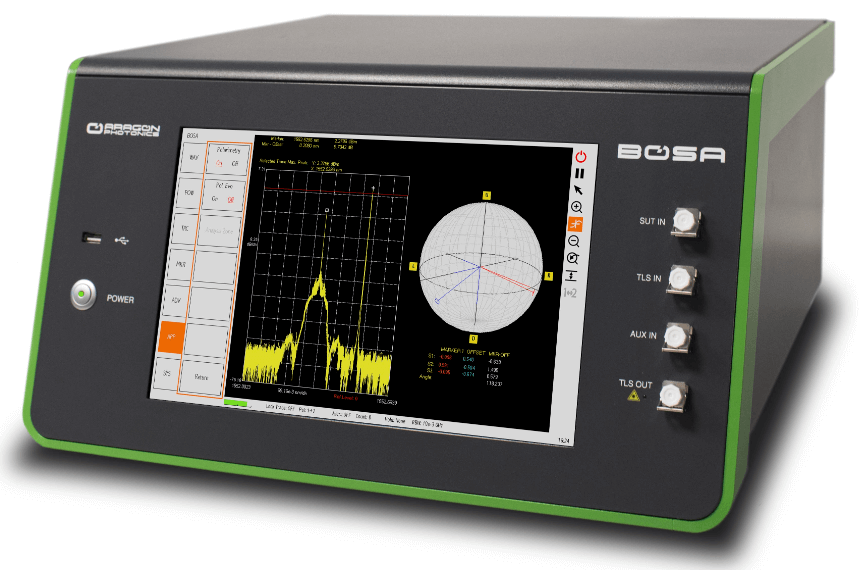
Figure 9: Optical Spectrum Analyzers (OSA)
An OSA analyzes the optical spectrum of the signal, noteworthy for determining the baud rate—the rate at which the signal's state changes in the fiber. This helps understand modulation depth and signal encoding efficiency.
Significance of Bit Rate and Baud Rate Choices in Optical Network Optimization
Selecting the correct bit rate and baud rate in an optical network can maximize the performance of the optical network and network reliability. Setting these rates too high can cause signal distortion and data loss, as the system may be unable to handle the excessive load. On the contrary, rates that are too low underutilize the network's potential, leading to inefficiency.
The key is to balance the bit rate and baud rate according to the network's demands and the optical fiber's physical characteristics. This includes considering factors like the type of optical fiber, the transmission distance, and the network's traffic and capacity requirements. Engineers need to match these rates with the modulation techniques and error correction protocols in use to optimize data throughput and signal quality.
By fine-tuning these parameters, network operators can maximize infrastructure utilization, avoid bottlenecks, and minimize errors. This careful calibration ensures high data integrity and transmission efficiency, maintaining the high-performance levels required in today's high-speed, data-intensive optical networks.
Conclusion
The exploration of baud rate and bit rate within the telecommunications sector reveals a profound impact on the development and optimization of digital communication systems. From the historical telegraph innovations of Émile Baudot to the intricate data networks of today, these metrics serve as needed tools for engineers and network designers aiming to maximize efficiency and performance. The strategic manipulation of baud rate and bit rate, through advanced modulation techniques and careful network planning, allows for significant improvements in data throughput and quality, particularly in bandwidth-limited scenarios. As we continue to demand more from our digital infrastructures, the insights gained from baud rate and bit rate measurements will remain instrumental in guiding technological advancements and in achieving the high-speed, reliable communications infrastructure compulsory for future innovations. This comprehensive analysis not only underscores the technical relevance of these measures but also highlights their practical implications in an era where digital communication forms the backbone of global connectivity.
Frequently Asked Questions [FAQ]
1. How do you find the bit rate from a sample rate?
The bit rate is derived from the sample rate by multiplying the sample rate by the number of bits per sample and the number of channels. The formula is:
This calculation gives you the total bit rate for an audio file, for instance.
2. How do you calculate the bit rate and baud rate?
Bit Rate: This is calculated as mentioned above and represents the total number of bits transmitted per second.
Baud Rate: Baud rate refers to the number of signal units per second that includes information. If each signal unit (baud) carries one bit, then the baud rate equals the bit rate. In cases where each signal carries more than one bit, the baud rate is the bit rate divided by the number of bits per signal unit.
3. How do I know what bit rate to use?
The appropriate bit rate depends on the application's needs for quality and available bandwidth. For streaming audio or video, a higher bit rate delivers better quality. However, it requires more bandwidth and storage. For telecommunications, the bit rate is often constrained by the transmission medium and encoding method.
4. What happens if the bitrate is too high?
If the bit rate exceeds what the storage or transmission channel can handle, it can lead to issues such as buffering, interruptions in streaming, or data loss. For instance, streaming at a high bit rate over a slow internet connection will likely result in a poor playback experience.
5. What is the best bit rate for CCTV?
For CCTV, the best bit rate depends on the desired image quality and storage constraints. Typically, a higher bit rate allows for better video quality. A common range is between 2 Mbps to 6 Mbps for 1080p video. Adjusting the bit rate is insistent to balancing quality and the amount of video that can be stored or transmitted efficiently.
About us
ALLELCO LIMITED
Read more
Quick inquiry
Please send an inquiry, we will respond immediately.

A Comprehensive Exploration of Microcontroller Technologies and Applications
on July 8th

Silicon Carbide Unveiled: Properties, Methods and Applications
on July 5th
Popular Posts
-

What is GND in the circuit?
on January 1th 2917
-

RJ-45 Connector Guide: RJ-45 Connector Color Codes, Wiring Schemes, R-J45 Applications, RJ-45 Datasheets
on January 1th 2478
-

Fiber Connector Types: SC Vs LC And LC Vs MTP
on January 1th 2073
-

Understanding Power Supply Voltages in Electronics VCC, VDD, VEE, VSS, and GND
on November 8th 1863
-

Comparison Between DB9 and RS232
on January 1th 1756
-

What Is An LR44 Battery?
Electricity, that ubiquitous force, quietly permeates every aspect of our daily lives, from trivial gadgets to life-threatening medical equipment, it plays a silent role. However, truly grasping this energy, especially how to store and efficiently output it, is no easy task. It is against this background that this article will focus on a type of coin cell battery that may seem insignificant on the...on January 1th 1705
-

Understanding the Fundamentals:Inductance Resistance, andCapacitance
In the intricate dance of electrical engineering, a trio of fundamental elements takes center stage: inductance, resistance, and capacitance. Each bears unique traits that dictate the dynamic rhythms of electronic circuits. Here, we embark on a journey to decipher the complexities of these components, to uncover their distinct roles and practical uses within the vast electrical orchestra. Inductan...on January 1th 1649
-

CR2430 Battery Comprehensive Guide: Specifications, Applications and Comparison to CR2032 Batteries
What is CR2430 battery ?Benefits of CR2430 BatteriesNormCR2430 Battery ApplicationsCR2430 EquivalentCR2430 VS CR2032Battery CR2430 SizeWhat to look for when buying the CR2430 and equivalentsData Sheet PDFFrequently Asked Questions Batteries are the heart of small electronic devices. Among the many types available, coin cells play a crucial role, commonly found in calculators, remote controls, and ...on January 1th 1534
-

What Is RF and Why Do We Use It?
Radio Frequency (RF) technology is a key part of modern wireless communication, enabling data transmission over long distances without physical connections. This article delves into the basics of RF, explaining how electromagnetic radiation (EMR) makes RF communication possible. We will explore the principles of EMR, the creation and control of RF signals, and their wide-ranging uses. The article ...on January 1th 1523
-

CR2450 vs CR2032: Can The Battery Be Used Instead?
Lithium manganese batteries do have some similarities with other lithium batteries. High energy density and long service life are the characteristics they have in common. This kind of battery has won the trust and favor of many consumers because of its unique safety. Expensive tech gadgets? Small appliances in our homes? Look around and you'll see them everywhere. Among these many lithium-manganes...on January 1th 1497


